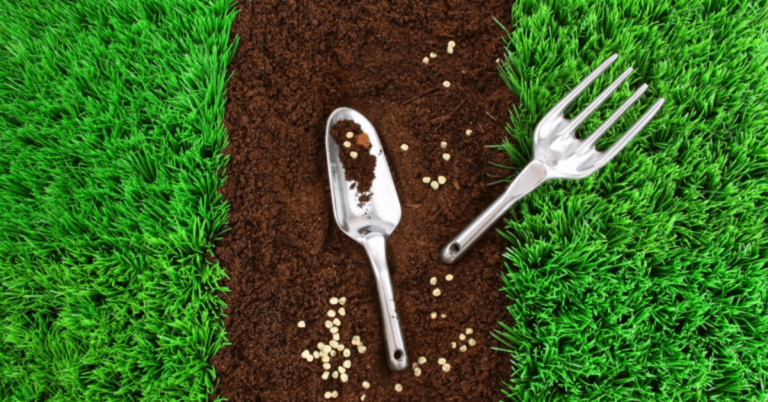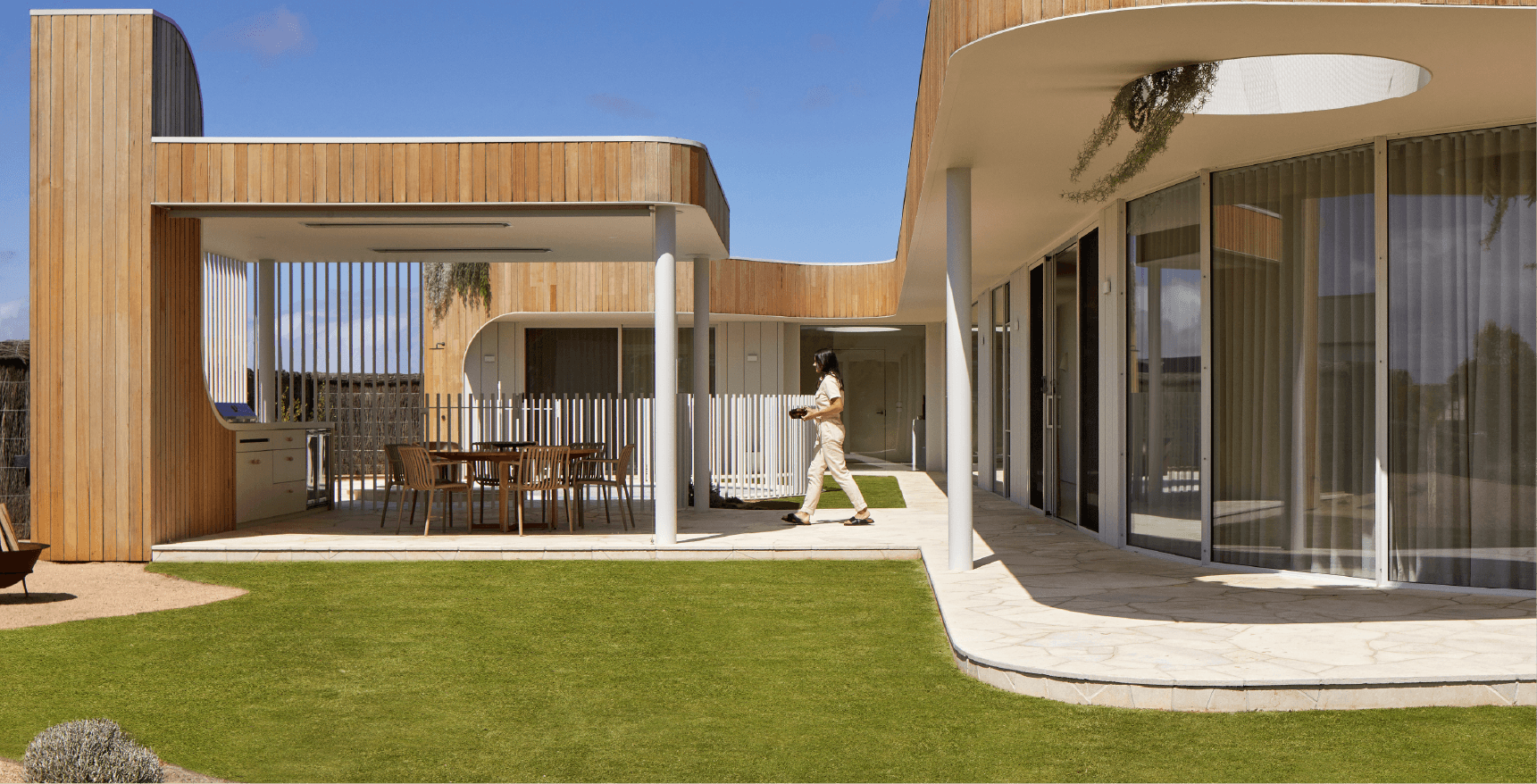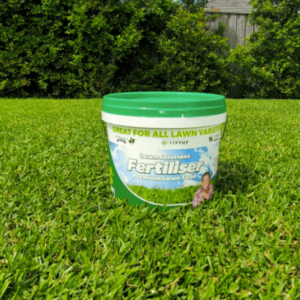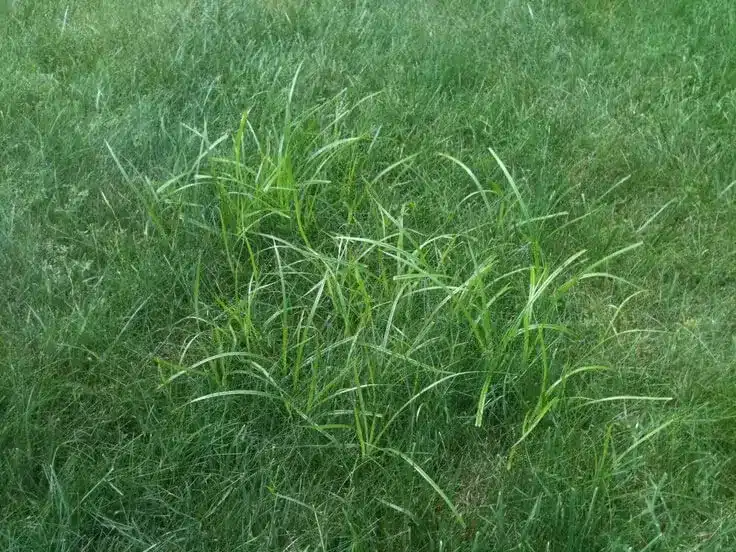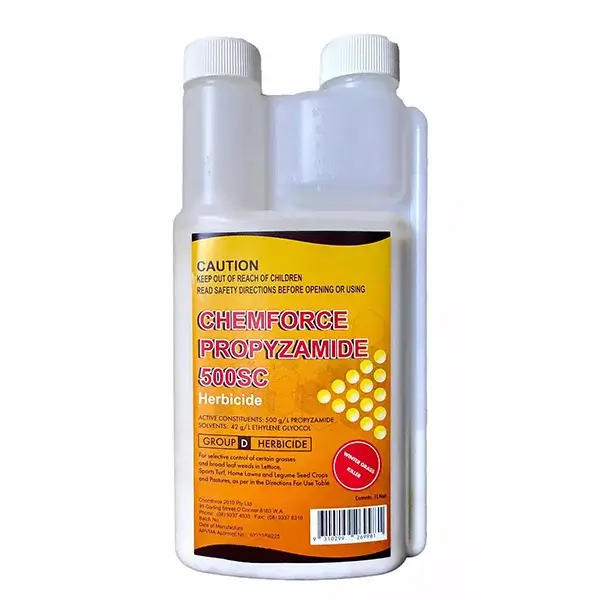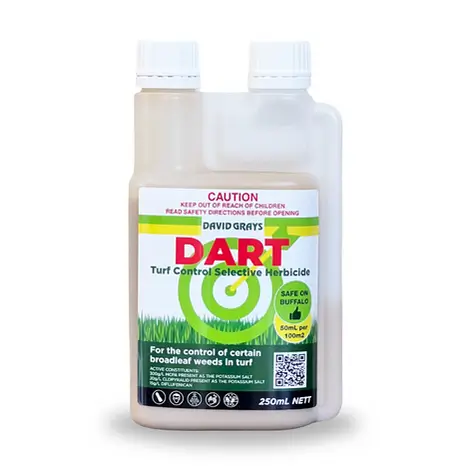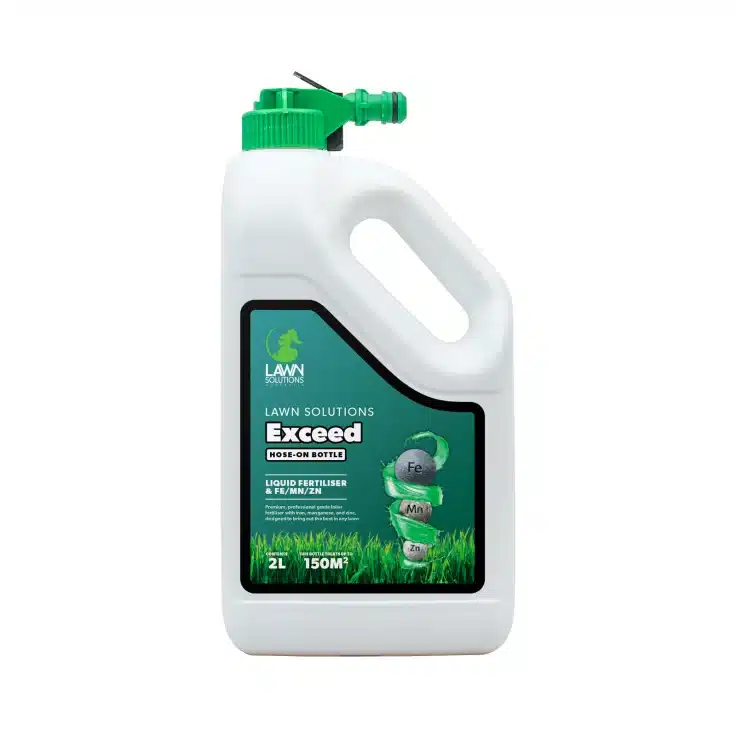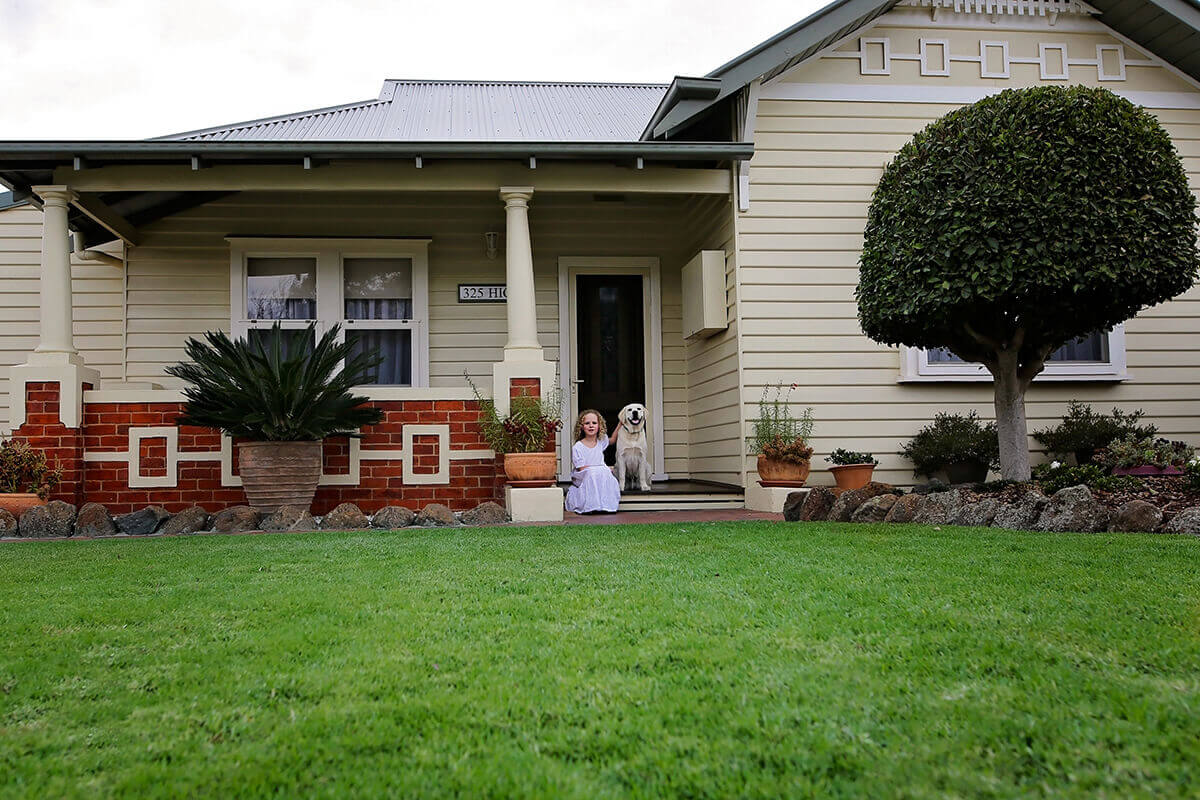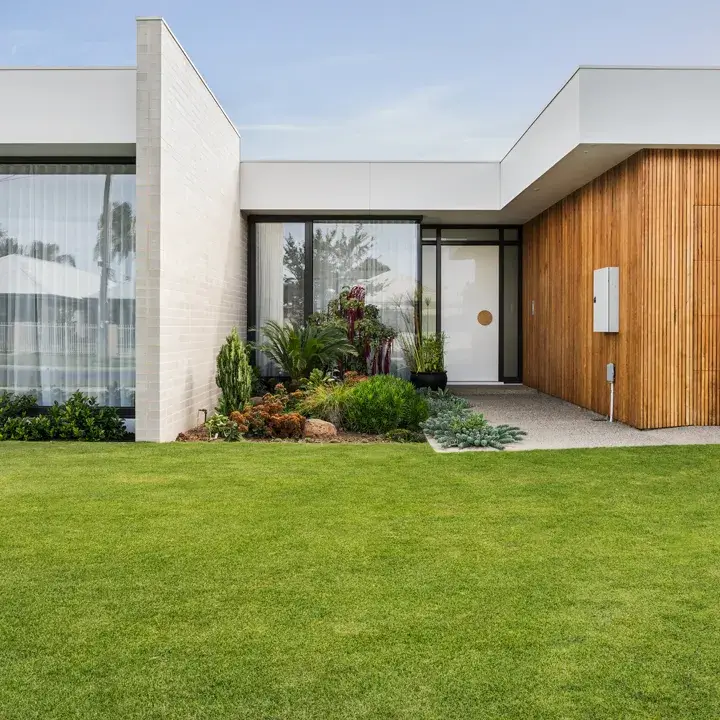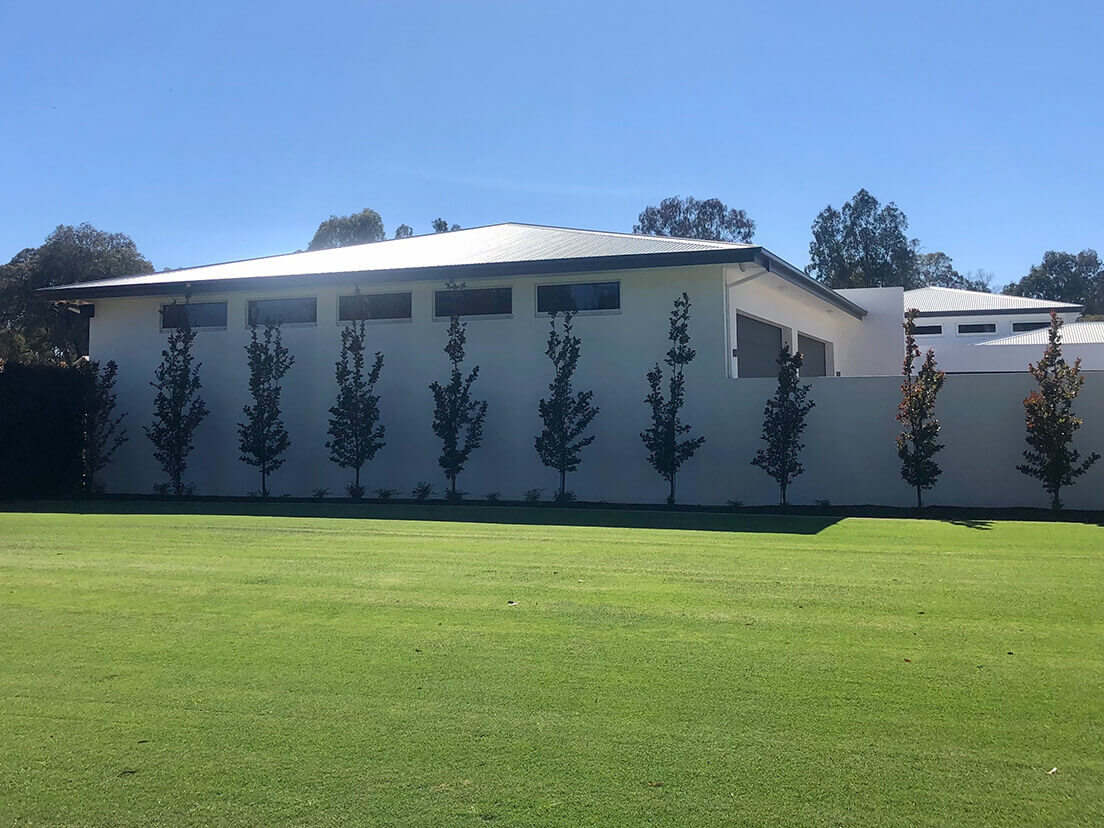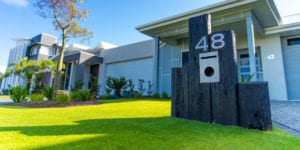Believe it or not, there are many ways to establish a new lawn.
While the quickest and easiest way is to install solid turf, some people due to budget restrictions sometimes also choose to hydroseed a new lawn.
Hydroseeding is where a combination of seed, water, fertiliser and tracking dye is sprayed on the topsoil through a cannon or hose, resulting in an efficient way of planting new grass. While it may take longer for your lawn to grow this way, hydroseeding is a cost-effective option, particularly when covering large surface areas or slopes.
Solid turfing on the other hand, is the installation of an already established root system in the form of sod or turf grass onto your prepared site of topsoil. Solid turf will come in a slab cut form, where it can be placed straight onto prepared soil. Laying solid turf will give you instant results (which is why it’s known as instant turf), is low-maintenance and is perfect if you’re wanting to spruce up or repair your lawn with little wait time. The greatest benefit of instant turf is how quickly it will establish, and how little water it requires during this process.An instant lawn landscape solution will guarantee you get a result from your time and cost investment. Often when you seed a project, there is no guarantee that you will get the desired results or outcome you hoped for.
Grass seed vs. turf
Before you sit down to compare solid turfing and hydroseeding, there are a few key things to consider:
- Both lawn solutions, while different in their application, have the same end result––a great looking lawn.
- The variations in the process and maintenance required to establish a usable turf surface differ between the two methods. Hydroseeding requires regular upkeep while solid turf is easier to maintain in its aftercare.
- The level of agronomic knowledge you or your team have to manage and troubleshoot seeded areas to gain the desired result will be a factor.
- There is also the issue of cost to consider.
Is it quicker to seed or turf?
There are two very different timeframes you are working with; one is significantly longer in establishment timeframes, while the other is virtually instantaneous.
By using the hydroseeding method, you will save money initially but at the expense of a lengthier waiting time and no guarantees on a long term result. Seeding a new lawn can be an exercise in patience, with seeds generally germinating between 5-7 days. The time it takes to nurture a seeded or hydroseeded lawn surface can be anywhere from 6-12 months. The amount of water required to establish a seeded lawn is also a significantly greater cost than an instant lawn landscape, which can be established and have water backed off within a couple of weeks of installing.
However, if you are wanting to revegetate or cover a vast area quickly, then hydroseeding is a better option than other direct, traditional methods of seeding. It is also a more convenient way to revegetate areas that are hard to access, such as slopes and hillsides.
On the other hand, solid turf is known as instant turf for a reason! It’s quick to lay down and has an immediate visual impact (don’t underestimate the value of that instant ‘’wow’’ factor!), delivering desired results for the client/ customer/community straight away.
Is it cheaper to seed or turf?
With instant turf, you significantly reduce any establishment risk––guaranteeing an instant result for the money and time invested. In the case of re-turfing a sporting facility, using turf rather than seed to replace or repair the surface will reduce time out of play and provide a quick and easy lawn solution––minimising costs and stress in the short and long-run. So while turf is certainly a more affordable option than many people sometimes think, it will be a slightly more expensive upfront cost, but will guarantee you a result.
While hydroseeding may be cost-effective in the short-term, it takes longer to see results. Seeding may also end up as the more expensive solution over time. The final cost of seeding is influenced by factors like suitability and sustainability of seed variety, labour costs and how large the area is that you’re seeding. There are also no guaranteed results for all your hard work, so you’re at risk of having to pay to seed again if the first time doesn’t work out.You must also consider the ongoing water costs to establish and maintain, as many seeded varieties have higher water requirements longer term. And of course, while attempting to germinate a seeded area, you must also factor in to your budget pre and post emergent chemical costs to help minimise weed invasion during the grow in period.
What is the difference in maintenance for grass seeding and turf?
With councils and developers placing tighter constraints on new turf areas, you need to consider installation process and establishment costs and the ongoing input costs for irrigation, fertiliser, herbicides etc. The labour-intensive hours required to then establish and maintain the area must also be considered during the tender process.
Watering and fertilisation
Solid turf varieties need to be watered immediately after being rolled out, in order to avoid the grass drying out and dying. In the weeks that follow, turf needs frequent watering to maintain its health and success. This can be tedious, depending on the type of turf you invest in.
Solid turfing with C4 warm season grass varieties automatically eliminates many of those uncontrollable risks associated with turf establishment. For example, the water requirements of C4 warm season hard turf surfaces as compared to C3 cool season grass can be up to 66% less, pending seasonal conditions.
The fertiliser inputs of a C4 warm season grass installed as solid turf generally only requires one application on installation, a second application 4-6 weeks post-installation, and an application in autumn and spring thereafter.
This is compared with the requirements of a hydroseeded site of either C3/C4 grasses, where it is essential that an application of lawn fertiliser on installation is followed up with regular applications every 6-10 weeks, until a complete cover of thick dense grass has been established. On average this will more than double the fertiliser applications and associated costs for the first 12 months, compared to laying turf.
Hydroseeding also requires more ongoing maintenance, with the repairing, topdressing and reseeding of damaged areas that may have been affected by washout caused by irrigation or rainfall.
Weed eradication
In terms of weed eradication/herbicide application, solid turf––if purchased from a reputable supplier––should generally be weed-free and weed-resistant, especially if the topsoil is prepared properly. If a C4 solid turf has been installed correctly and received adequate moisture and nutrients to maintain a healthy turf, then herbicide applications will likely not be required.
This is compared with hydroseeding, where the bare soil is exposed and moisture and nutrient levels are high, so weed germination is inevitable. This then requires regular applications of a selective herbicide to eradicate weeds before they start to shade, compete with (or crowd out) lawn space. Alternatively, an application of pre-emergent herbicide before planting would need to take place, which also needs to be factored into initial cost estimates.
So is grass seed or turf better?
While the definite answer to this question depends on your exact situation, needs and time you’re willing to commit, we think it’s pretty clear which method makes for a better lawn for the average Aussie.
While installing solid turfing may be more labour-intensive and present a greater upfront cost in the beginning, once installed it requires minimal hours to maintain. This is compared to hydroseeding, which requires a higher level of maintenance over a longer initial establishment period––with no guaranteed result for your time and cash investment. The man-hours and the level of agronomic knowledge required to achieve a desirable, quality lawn surface with the hydroseeding method make it a much harder method all round.
Other damage sustained by pests and disease during a lengthy establishment period can also affect the process. Seeding requires constant monitoring to act on these situations as they arise––which is sometimes difficult to predict at the time of quoting a contract. It is usually the unforeseen unpredictables which blow the budget and time costs out, leaving people wishing they had gone for the hard turf option in the first place!
If you’re still not sure which is the right option for you, get in touch with our expert team or check out this short video for more tips on why you should choose turf, or instant lawn, over seed.

